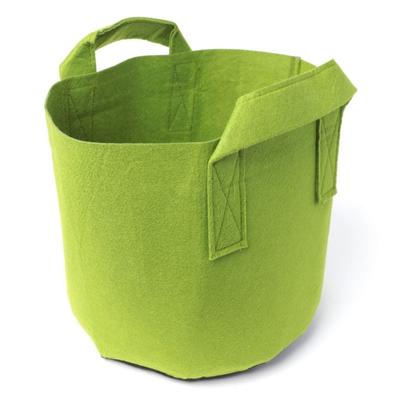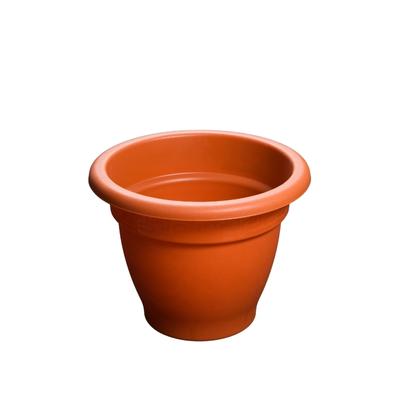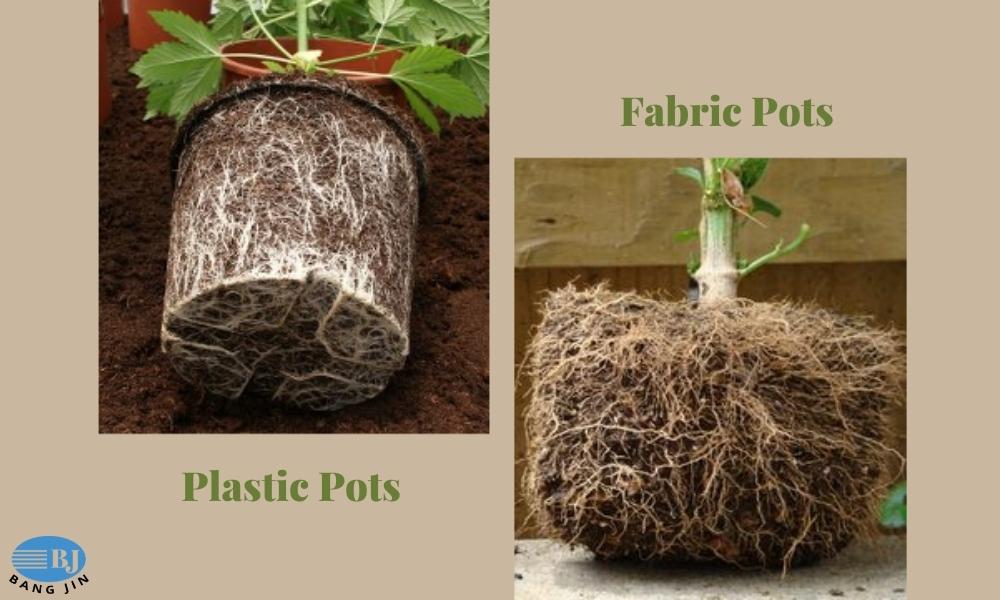You have to make a number of decisions at the start of every growing season, including what plants you’ll be growing, what lighting you’ll use, how much room you’ll need, and how much it will all cost.
Cultivators have long used plastic pots as a standard. They work quite well, are reasonably durable, and are inexpensive. Fabric pots have gained favor recently, though, not simply because they are superior to plastic for growing plants, but also because they are more environmentally friendly.
Knowing the benefits and drawbacks of each can help you choose between plastic and fabric pots because neither one is perfect. If you are wondering are fabric pots better than plastic pots, this article will help you guide through it.
What Are Fabric Pots?

A new kind of planter for growing plants is made of fabric. Although they are composed of plastic and most are made of BPA-free polypropylene, which is quite similar to landscape cloth, they are referred to as fabrics. Small holes in the substance allow air and water to pass through.
They are available in a range of sizes, even very large ones that are currently being marketed as quick raised beds.
What Are Plastic Pots?
Pots made of plastic are robust, lightweight, and flexible. They match both interior and outside decor because they come in every color of the rainbow. Plastic is a great option for plants that love wetness or for gardeners who water seldom because it lacks the wicking effect of clay.
Plastic pots are considered safe for growing plants because they are constructed of inert materials. When the pot is no longer used, disposal is environmentally benign because many are constructed of recyclable plastic (unglazed clay pots are fully recyclable as well).
Are Fabric Pots Better Than Plastic Pots?
To know the answer to this question, you need to be aware of the pros and cons of both the kind of pots:
Benefits of Using Fabric Pots
Fabric pots have handles, continuing where plastic pots left off. For larger cultivators, this might be a sufficient reason to switch. It can save a lot of time and work to be able to pick up your plants with ease if they have handles.
Although both plastic and fabric pots are reusable, fabric pots usually last longer and retain their quality. A fabric pot’s material might stretch and deteriorate over time, but it will endure longer than a plastic one, which would eventually fracture or break. Beyond the handles, the capacity of a fabric pot to breathe sets it apart from a plastic one. Fabric pots are exceptionally well aerated because the fibers are thin enough to permit air to pass through. Larger roots and larger plants are nearly invariably a result of increased oxygenation of the root zone. Fabric pots do, however, have drawbacks as well. In Bangladesh, B J Geotextile grows bags come in different shapes and sizes according to the specific planting needs at an affordable bag price.
Disadvantages of Fabric Pots
Although larger roots are nice, fabric pots occasionally allow for a bit too much root growth. A fabric pot could let the roots grow through the threads in the pot while a plastic pot would keep your roots contained, which usually results in wrapping.
Although uncommon, this can eventually limit your roots and cause problems by plugging up the little openings in the pot. It will also be more difficult to clean your pots afterward.
Your plants also require assistance from their pot. As long as you take the time to spread your medium around the pot evenly, a cloth pot will support your plant just fine. Because of its stiff sides, a plastic pot will compel the medium to center on the bottom, whereas a cloth pot will have more give if your medium is laid unevenly.
Last but not least, the price is a major deterrent for some growers from using fabric pots. Two and a half times as much as a one-gallon plastic pot can be spent on a one-gallon cloth pot with handles. This might add up quickly if you have a lot of plants, especially if you need to transplant them into a bigger pot.
Advantages of Using Plastic Pots
Let’s start with the fact that plastic pots are quite reasonably priced. Plastic pots are the most cost-effective choice for a grower who wants to save money.
You don’t have to worry about plastic pot slumping when your plant gets bigger and heavier since the stiff and inflexible plastic helps maintain your medium compact and sustained.
Last but not least, roots are effectively protected by plastic pots. In a plastic container, your roots are prevented from growing outward and downward, resulting in a strong root web that is woven and wrapped around your medium.
Drawbacks of Plastic Pots
Plastic pots’ rigidity can only support you to a certain extent. A plastic pot with a large, hefty plant inside is more likely to split or break since it has very little give. Making sure you have the appropriate size pots for up-planting into larger pots when your plants require it can help you avoid this.
Plastic pots’ lack of breathability is another drawback. Although most pots have drainage holes on the bottom, the holes don’t do much to evenly aerate the plant.
And since plastic pots often only have a lip at the top to hold, moving your plants once they are potted would be more challenging with them.
Conclusion
In the end, it’s up to you whether to use plastic or fabric pots. One isn’t obviously superior to the other, and as we’ve mentioned, both have advantages and disadvantages. Plastic containers will probably be less expensive; however, cloth containers are always preferable for their greater quality and environmental friendliness. Fabric pots may be a better choice if you plan to grow trees for several years in the same container because they minimize root issues. But the majority of gardeners don’t. The benefits are less obvious when used with annual plants, which is how most gardeners use them. Plastic works better because it needs less watering for annual plants.



